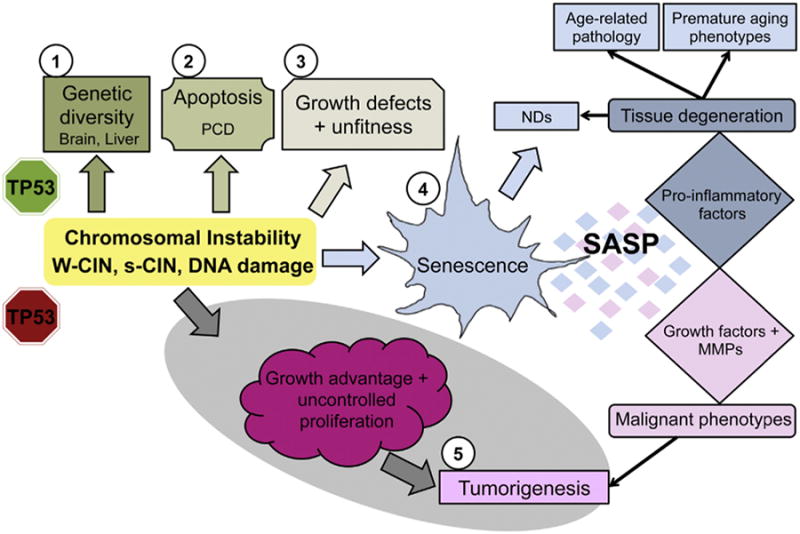Fig. 5.

General model of functional consequences of CIN. (For interpretation of the references to color in this figure legend, the reader is referred to the web version of this article.) When TP53 is present and functional (top portion of scheme), CIN and CIN-associated DNA damage triggers different types of responses depending on the cell type and on the severity of abnormalities. (1) Aneuploidy provides genetic diversity during neuronal maturation and also selective advantage against stresses in hepatocytes. (2) High CIN has been associated with increased apoptotic frequency and PCD during neural development likely to eliminate cells with abnormal DNA content. (3) Aneuploidy slows proliferation rate and it is detrimental to cell and organismal fitness. (4) CIN generation in vitro and in vivo has also been linked to the induction of senescence. Senescent cells have the ability to change their microenvironment through the secretion of SASP, which comprises several signaling molecules, pro-inflammatory and growth factors. The inflammation generated upon SASP expression has been implicated in the pathology of age-related diseases, early onset of premature aging phenotypes and also in NDs such as AD and PD. Cellular senescence is also thought to contribute directly to NDs because it causes neural stem cell depletion in the adult (blue arrow). In circumstances where TP53 is not functional (bottom portion of scheme), CIN can be a driver of tumorigenesis due to gene dosage imbalances or due to the higher propensity to generate GIN in these cells. In both cases the outcome is growth advantages relative to diploid counterparts. Cells prone to transformation can acquire malignant phenotypes upon interaction with the SASP (i.e., epithelial to mesenchymal transition, increased invasiveness and motility). Induction of senescence in the brain by elevated CIN provides a possible unifying mechanism to explain age-related increase in inflammation and neurodegeneration, as well as the higher incidence of brain tumors that is associated with age (5).
